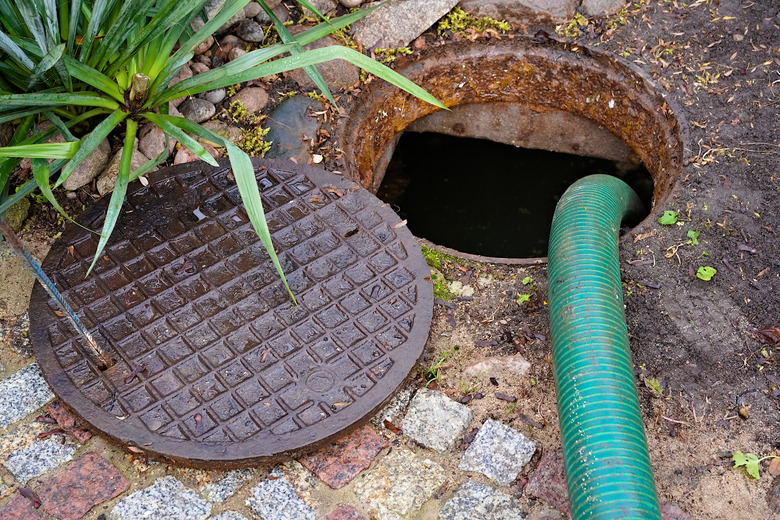How Do Septic Tank Aeration Systems Work?
Households have two options for sewage treatment systems: septic and aerobic, and they both work to begin the process of cleaning wastewater before it goes to a secondary treatment area. You must have the right design on your property, because it can significantly affect how your wastewater is cleaned. Depending on how large your property is, and your family's everyday needs, you might prefer a septic aeration system if you already don't have one.
Tip
Septic tank aeration systems introduce air into sewage treatment systems to mix and oxygenate the liquid. The system is made up of three chambers that filter and purify household wastewater.
How Anaerobic Systems Work
How Anaerobic Systems Work
There are two types of bacteria in a septic system: aerobic bacteria and anaerobic bacteria. Aerobic bacteria require oxygen, and anaerobic bacteria don't require oxygen. Standard septic tanks have an anaerobic environment where heavier solids sink to the bottom, while lighter fats, oils and greases rise to the top and gray water is suspended between them. Bacteria are needed to break down the solid waste and allow "clean" gray water to filter into a drain field.
The system is designed to hold wastewater in the tank for about 24 hours before moving into a drain field. The only problem with septic tanks is that the anaerobic environment allows little to no oxygen to dissolve in the water. If you have this type of system, a large, empty property is needed to house a drain field where the second phase of water treatment happens.
How Aeration Systems Work
How Aeration Systems Work
Since septic tank systems create an environment where there is limited oxygen in the wastewater, the septic aeration system is designed to introduce oxygen into the wastewater. Aerators introduce air into sewage treatment systems to mix and oxygenate the liquid, and this system is made up of three chambers that filter and purify household water.
The first chamber, known as the "trash trap," is the pretreatment chamber, and it operates just like an anaerobic septic tank. Heavier solids settle to the bottom, and lighter fat, oil and grease float to the top. In the second chamber, water with suspended solids enters the aeration compartment, and the aerator mixes and adds oxygen to the water.
Last, the water moves into a clarifier chamber, and the remaining solids settle to the bottom before the clean water is pumped out of the system. This clean water will move into a smaller, secondary treatment system like a drain field, but it's smaller than drain fields that anaerobic systems use. To install, replace, repair and pump septic tanks, you need to hire a septic tank company.
Benefits of an Aeration System
Benefits of an Aeration System
If you don't have a large space that can house a drain field or your soil prevents septic drainage, you should get an aeration system. You'll mostly find aeration systems in city areas or if the drain field in an anaerobic septic system fails. People tend to prefer aeration systems because the oxygen water requires less secondary filtration, and it breaks down and reduces solids that could clog drain fields.
Since aerators quickly break down solids in a septic system, your system will be less affected by excessive water usage. If you have a large family, then an aerator is the way to go.
Septic Aerator Drawbacks
Septic Aerator Drawbacks
There are some drawbacks to having a septic system aerator, though. First, septic system aerators burn electricity, so you want to make sure the system doesn't fail. Another drawback is that if your pump is too strong, the aerator could disturb the contents in your tank. If this happens, solids could be flushed into the drain field. Last, pumps can get clogged with lint from washing machines.
